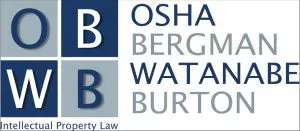On April 30, 2024, the United States Patent and Trademark Office (USPTO) published a Request for Comments (RFC) regarding the impact of the proliferation of artificial intelligence (AI) on prior art, the knowledge of a person having ordinary skill in the art (PHOSITA), and determinations of patentability made in view of the foregoing. In this article we provide context for the questions asked in the RFC and ask our readers to provide input on a selection of the questions from the RFC via a survey.
The RFC contains 15 questions divided into three categories: A) the impact of AI on prior art; B) the impact of AI on a PHOSITA; and C) possible need for changes to examination guidance and/or legislative change.
The question of how AI impacts prior art raises a number of important issues. First, it is important to recognize that "AI", in the prior art context, may mean many different things. Consider the following examples:
- A human publishes a technical paper that was written by the human but revised or edited by an AI-powered editing tool;
- A human conceives a new technical development, describes it to an AI-powered tool in "bullet point" format, asks the AI tool to prepare a written description, and then publishes that description;
- An AI system is designed to parse existing prior art, create new combinations and permutations of existing disclosures, and issue those as new publications; and
- An AI system creates a publication with no explicit human input, for example, based on environmental inputs.
Clearly, the ratio of human to AI contribution to a publication can vary significantly. From a policy standpoint, it may be tempting to try to establish a "minimum human contribution" standard for publications to qualify as prior art. Under such a standard, the first two examples might be treated as prior art and the last two examples might not. The rationale for this would be to avoid scenarios where publications generated "primarily" by AI would be available to prevent patenting of inventions made by humans. Some have argued that because an AI system cannot be listed as an inventor on a patent (see Thaler v. Vidal1), an AI system likewise should not be considered capable of producing prior art that can defeat a patent application on an invention made by a human. Another rationale for this might be, given that AI is known to hallucinate, 2 publications generated primarily by AI would be less reliable and less likely to disclose operable technology.
On the other hand, one must recognize that the four examples above may be indistinguishable based on viewing the publications themselves. Therefore, any policy that would differentiate prior art status of publications based on human contribution would necessitate some new system of labeling publications based on contribution. The practical implications of that may make this sort of approach unworkable. Moreover, more broadly, most jurisdictions have laws that define prior art in terms of what is publicly available as of a certain date. For example, in the U.S., 35 USC 102 provides, inter alia, that an invention is not patentable if "the claimed invention was patented, described in a printed publication, or in public use, on sale, or otherwise available to the public before the effective filing date of the claimed invention..." The law makes no distinction as to how that printed publication, public use or sale was generated. Introducing a system that would classify publications into "prior art" and "not prior art" based on the manner in which they were generated would require significant changes to the laws all around the world. From a technical standpoint, most technical experts will agree that AI systems are essentially statistical machines that cannot "conceive" or "think" in a human manner. Thus, even if AI systems can take existing prior art and rearrange, re-package and republish it in various ways, would the level of the technical disclosure not remain at the same level as the prior art on which it was based? For example, one AI generated content website3 purports to have the ability to develop disclosures based on existing data from multiple different sources dating back several years. Is there anything "new" in these disclosures? Reasonable minds may differ.
As can be seen from the perspectives provided above, the question of how to treat the prior art effect of AI-generated publications is far from simple.
The second topic, impact of AI on the PHOSITA, has also generated significant debate. Some have argued that if AI becomes the PHOSITA then nothing would be patentable. This, however, misses the point. The question is not whether the PHOSITA is AI, but rather whether the PHOSITA in a particular area of technology should be presumed to be capable of employing AI. A few years ago, it could be said that the use of AI was limited to certain fields. Today, use of AI has reached virtually every domain. Thus, it would seem that the PHOSITA should be assumed to be familiar with all of the tools available to their technical domain and these tools, every increasingly, will include AI tools.
The third topic, possible need for changes to examination guidance and/or legislative change, depends of course on the outcome of the first two topics. Legislative change is possible, but fundamental changes to the patent system – particularly on an international level – would be extremely difficult. Updated examination guidance and administrative rules would be more obtainable objectives. Which approach is ultimately taken will have to wait for these ongoing policy considerations to be completed.
The full text of the RFC is available here: https://www.federalregister.gov/documents/2024/04/30/2024-08969/request-for-comments-regarding-the-impact-of-the-proliferation-of-artificial-intelligence-on-prior. Responses are due by July 29, 2024.
In the meantime, we encourage our readers to respond to our own survey on these issues (not affiliated with the RFC from the USPTO). All individual responses to our survey will be confidential. The aggregated results of the survey will be published in a future article. To access our survey, please visit the following link: https://forms.gle/ewc9keQnfpwZ6Ps68.
Footnotes
1. 43 F.4th 1207 (Fed. Cir. 2022).
2. What are AI Hallucinations?, IBM (2024), https://www.ibm.com/topics/ai-hallucinations (last visited May 10, 2024).
3. Alexander Reben, All prior art (2016), https://allpriorart.com/ (last visited May 10, 2024).
The content of this article is intended to provide a general guide to the subject matter. Specialist advice should be sought about your specific circumstances.



